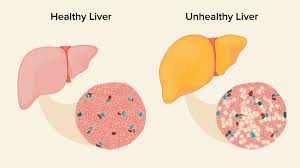Baltimore, MD – A new study reveals that a community-based screening model utilizing the Rapid Interactive Screening Test for Autism in Toddlers (RITA-T) is significantly reducing the time it takes for children to receive an autism diagnosis, particularly those in underserved communities.
Research conducted by the Kennedy Krieger Institute’s Center for Autism Services, Science and Innovation (CASSI), published in Pediatric Investigation, demonstrates the effectiveness of RITA-T, a direct observational tool that assesses developmental skills often delayed in autism, such as social engagement and response to interactions. Unlike traditional parent questionnaire-based screenings, RITA-T allows for more accurate identification, especially in children as young as 18 months.
Key Findings:
- Faster Diagnoses: Children screened with RITA-T received autism diagnoses an average of 67 days sooner than those referred through traditional methods.
- Reaching Underserved Communities: Families from lower-income communities were more likely to be identified using the RITA-T model, addressing socioeconomic disparities in autism diagnosis.
- Expanded Reach: Children in the RITA-T group traveled farther for evaluations, demonstrating the model’s ability to reach communities with limited diagnostic resources.
- Study Size: The study examined 394 toddlers diagnosed with autism.
Dr. Roula Choueiri, Director of Primary Care and Community Partnerships at CASSI and lead author of the study, emphasized the importance of early diagnosis and intervention. “Too many families face long wait times and limited access to specialists,” said Dr. Choueiri. “RITA-T is accessible, simple to administer, and takes less than 20 minutes to complete. Once a child is identified through this tool, families are immediately connected with appropriate specialists and resources.”
The study showed that this model reached more underserved and rural communities. Researchers are now advocating for broader adoption of community-based screening models, including expanding provider training and integrating RITA-T into early childhood and primary care settings. These trainings are ongoing in Maryland, with plans to expand them to other communities and states.
“The data clearly shows that RITA-T is an effective tool,” said Dr. Choueiri. “By equipping more providers with this screening model, we can improve early detection, reduce disparities, and help children receive life-changing interventions sooner.”
More information: Roula Choueiri et al, Demographic and socioeconomic characteristics of patients diagnosed with autism through the Rapid Interactive screening Test for Autism in Toddlers, Pediatric Investigation (2024). DOI: 10.1002/ped4.12453
Disclaimer: This news article is based on the information provided in the study and press release. It is important to note that research findings may evolve with further investigation. The information provided should not be interpreted as medical advice. For any concerns regarding autism or child development, please consult with a qualified healthcare professional.












